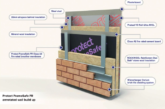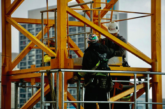
Wrexham Mineral Cables (WMC), a leading UK manufacturer of fire-resistant mineral insulated cables, says now is the time to focus and understand the pivotal role they play in building safety, before more lives are put at risk.
WMC’s call to action comes after the recent fire in a London high-rise residential building. It says this latest high-profile incident is a timely reminder, during Building Safety Month, that it is vital for building designers and specifiers to be able to identify and install appropriate cables which can survive, not just resist, real-life fire scenarios.
Currently, no fire-resistant cable under 20mm undergoes any type of direct impact testing. Whilst there is a test for fire with water, the actual pressure in this test is over SIXTY times less pressure than you would expect from a standard household sprinkler, let alone a commercial application or even a fire hose. However, fire-resistant cables that are more than 20mm undergo testing for direct impacts and “water jet” test.
For many years, WMC has been calling for all enhanced fire-resistant cables to undergo true fire scenario tests. The introduction of a higher classification of fire survival cable, for those which can continue to power critical circuits in the event of a fire and withstand the rigours of safety systems such as falling debris, collapsing walls, fire hoses or even activation of high-pressure sprinklers and smoke extraction, should be a must.
Steve Williams, Commercial Manager at WMC, commented: “There has been a real drive across the construction industry to make everybody in the supply chain more accountable throughout the various stages of the building’s existence. Sadly, the events at London’s New Providence Wharf remind us that multi-occupancy buildings remain high risk, and we must do all we can to make them safe.
“Fire survival cables are a vital component of building safety, yet we believe they remain an unidentified hazard. And because there is a lack of understanding about the important role, they play in keeping buildings safe, all too often inferior cables are installed. The sad reality is these cables are not likely to be adequate in the event of a fire. This uncertainty can only be ascertained when all current fire-resistant cables, regardless of size or construction, are subjected to true fire scenario tests.
“We are working hard to educate the market about the benefits of specifying fire survival cables. Changes have been welcomed where BS8629 recognises that polymeric fire-resistant cables may not survive direct impact during a fire. It states all non-armoured fire-resistant cables must be installed inside fire resistant conduit: this of course brings additional complications and extra costs over an MICC fire survival cable.








